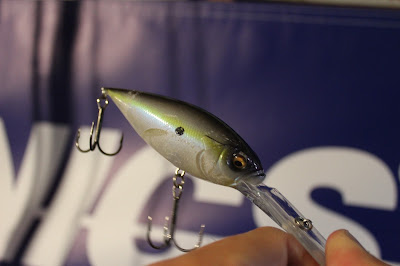I talk about Navionics a lot, but this past weekend it made a huge difference in my third place finish on Potholes Reservoir. Without it, I would not have cashed a check. To give you a background on Potholes, it is a very unique place with many, many underwater sand dunes.
When the water is high, "the dunes" are full of cover in backwaters and are a flippin' and pitchin' dream come true. When we fished it last weekend, the water was very low. It was some 20 feet lower than spring water levels and the fish were out much deeper. The places we all love to fish early in the year are now high and dry. The good news is these sand dunes and islands extend into the main lake.
With the Navionics+ cards I was able to see these offshore humps that were usually out in the middle of nowhere, but came up to 20, 10 or even 6ft deep. I spent my time fishing crankbaits around these islands in water that was 20 feet and would cast either up to the shallow water or along the deeper water as it dropped off. On a few of them, I would get to the shallowest point, drop my Power Pole and cast to all of the sides with a drop-shot. It provided several key fish for me each day doing that.
The other thing that came into play was fishing the rocky areas for smallmouth. Again, the Navionics card helped me. Not just to find the rocks, because they were easily visible with the naked eye, but to find hazards. Many of these rocky outcroppings came right up to the surface and running wide open over them would have been very dangerous. The same is true of the shallow sand dunes and more than one person I know got stuck on them.
What I did was set all of the water less than 30 ft to be a certain color on my graph. Since the water was approximately 20 feet low, anything less than 10 feet would show as blue on my graph. It helped me easily find spots to fish, but also helped me stay clear of potential dangers.
Here is a screenshot of what I was fishing and how it looked when I adjusted the depth range to show "shallow areas" as being anything less than 30ft and adjusted the "Fishing Range" do be anything deeper than 30ft. It showed the good spots and that is what I targeted with the crankbait.
I ended up the first day with just over 14lbs and the second day I had just under 12lbs. The first day I fished a rocky bank first thing and caught eight keeper smallmouth in about 45 minutes using the crankbait and a drop-shot.
I also had the big bass of the day on the second day with a 3.65lb bass that came on the Megabass Deep-Six on the steep side of one of these islands. It was slower for me the final day, I went to the rock islands and caught a quick limit but it was much smaller than the day before.
This was my first time using this crank and I loved it, it dives down to over 20 feet. This was a brand new bait for my practice day and as you can see, this bait got pretty chewed up from banging into rock, sand and from catching tons of fish on it. I caught multiple largemouth, smallmouth and some nice walleye with this bait over the three days I was there. The dropshot also produced well and helped me fill out my limit each day. I never caught any really good ones on it, but it definitely helped contribute to my total weight.
Cranking Gear
Rod: 7'5" MH Glass Composite Powell Max 3D cranking rod
Reel: Shimano Curado I (6.3:1)
Line: 12lb test Seaguar AbrazX
Bait: Megabass Deep-Six (sexy shad)
Dropshot Gear
Rod: 7' Phenix Ultra MBX drop-shot rod
Reel: Shimano Sustain 2500
Line:15lb Seaguar Smackdown Braid, 8lb Seaguar Tatsu leader
Bait: 4.5 inch Roboworm straight tail Aaron's Magic
Hook: Gamakatsu Aaron Martens TGW Drop Shot Hook (size 1)
Weight: 3/16oz Eco Pro Tungsten Full Contact Drop Shot Weight




No comments:
Post a Comment